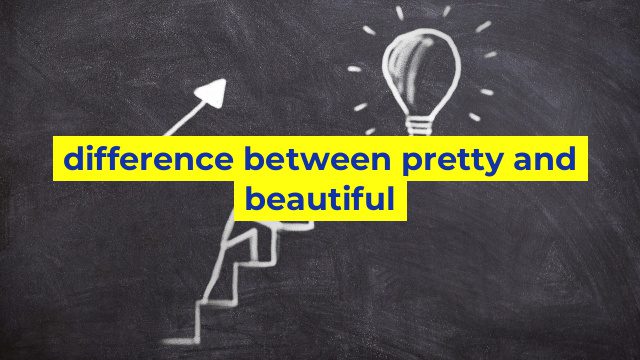Difference between Pretty and Beautiful
When it comes to describing physical appearance, words such as pretty and beautiful often come to mind. Although the two terms may seem similar in meaning, there are subtle differences that set them apart.
Pretty
The word pretty is often used to describe someone or something that is visually pleasing or attracts attention. It is commonly associated with traditional standards of beauty which typically involves having a symmetrical face, clear complexion, and well-proportioned body. Essentially, pretty refers to an external or superficial appearance that is cute, charming, or attractive in a conventional sense.
Beautiful
On the other hand, the term beautiful goes beyond just physical appearance. It encompasses a broader and deeper meaning that includes qualities such as inner strength, grace, and elegance that radiate from within. Beauty is subjective and can be found in the unique features of an individual, such as their personality, character, and actions. In essence, beautiful refers to a combination of physical and internal qualities that exude radiance and enchantment.
In summary, the major difference between pretty and beautiful is that pretty refers to a superficial or external appearance, while beauty encompasses both physical and internal qualities. Ultimately, it is important to remember that beauty lies in the eye of the beholder, and what one person finds beautiful, another may not.
Table difference between pretty and beautiful
As an AI language model, I am not capable of personal opinions or preferences, but I can help you create an HTML table that compares the difference between “pretty” and “beautiful” in a neutral way. This is how you can create it:
“`
| Pretty | Beautiful | |
|---|---|---|
| Definition | Aesthetically pleasing or attractive | Delighting the senses or mind, possessing qualities that give great pleasure or satisfaction to see, hear, think about or feel |
| Subjectivity | More subjective and may vary from person to person | Can be more objective and universally appreciated |
| Intensity | Can be less intense, more subtle or superficial | Can be more intense, profound, or transcendental |
| Context | May refer to a specific aspect, object, or person | May encompass a wider range of experiences, emotions, or ideas |
“`
Note: You can modify the content of the table to better fit your needs or preferences, and add more rows or columns if necessary.

